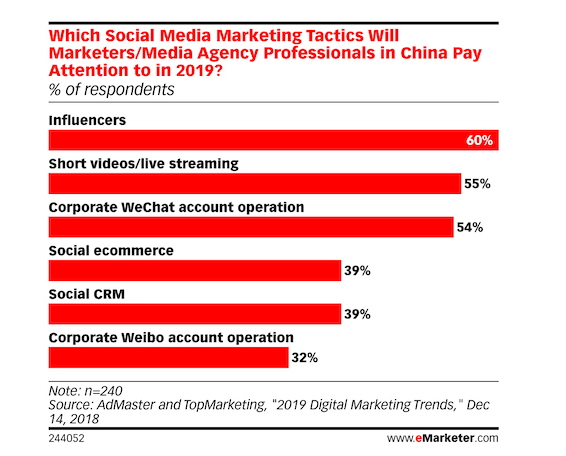Top Mistakes That You Need to Avoid in Content Marketing Strategy in China

Today, we have the pleasure to receive a guest blogger on our website. Nicole D.Garrison*
Despite the fact that the Chinese online marketplace is quite unique, content marketing is still a legitimate technique that businesses should apply to connect with local customers. Like in many other online markets, content marketing is effective only when you produce great content, so making appropriate investments in content creation is definitely a must.
However, the task of content production is always a tricky one regardless of the target audience and their native country. The main reason for this is an abundance of mistakes that could be made, and a business needs to develop a working strategy that provides consistent results.
Perhaps that’s why only 11 percent of B2C marketers rate their content strategy as “mature,” which is the highest level of effectiveness.
Credit: Content Marketing Institute
In this article, let’s go over three common content marketing mistakes that online businesses do in China. By knowing how to approach content production and strategy in the right way from the start, you’ll be able to save a lot of time and improve performance.
Mistake 1: Not Putting the Needs of the Target Customers First
This is one of the most common mistakes to be done in content marketing, and China is not an exception. Creating consumer-centered content is a critical consideration; in fact, Content Marketing Institute says that content marketing is a strategy
“…focused on creating and distributing valuable, relevant, and consistent content to attract and retain a clearly defined audience…”
“Valuable” and “relevant” are definitely the keywords here, and they apply to all countries and audiences. It’s simple: if customers perceive the content as unhelpful or irrelevant, they won’t interact with it, so you won’t achieve your marketing goals.
To avoid this mistake:
- Define the interests of your Chinese customers
- Identify problems that you can help them to resolve
- Select content types that are the most appropriate.
Mistake 2: Not Using Storytelling
Storytelling is another tremendously important content marketing technique that emerged as a necessity to shift from hard sell advertising. In fact, research says that up to 64 percent of customers are influenced to buy a product or service from a business that uses stories to communicate its purpose, actions, values, and mission.
Unsurprisingly, storytelling is very popular in China, so many brands use it to facilitate customer engagement and increase sales. Here are a couple of storytelling ideas to use in your content marketing strategy.
- Health vs Wealth. Unhealthy eating habits, poor lifestyle choices, etc. – an increasing number of Chinese people are beginning to question if risking their health over financial compensation is necessary (in fact, a recent study found that more young people are studying philosophy and arts rather than business, in an effort to find spiritual fulfillment)
- Community vs Individualism. Research suggests a shift to individualism among young Chinese people thanks to the impact of Western culture and technology; this means that you can explore stories of young Chinese customers and their desire to follow their passion in the postsocialist country.
Obviously, creative writing is critical for effective storytelling, so that’s why international brands often use online writing tools like Trust My Paper, Grammarly, Best Essay Education, and Hemingway Editor for clear messaging.
Mistake 3: Going for One-Size-Fits-All Approach to Influencer Marketing
This is another mistake that often results from a lack of local market knowledge.
It’s a known fact that influencer marketing is huge in China (see the image below), so brands pick just about any influencer to help them promote their products and share their content. This is a risky road to take because an inappropriate endorsement strategy can easily lead to poor engagement and low brand/product awareness.
Most Popular Marketing Tactics in China in 2019. Source: eMarketer
Let’s see how it should be done.
Step 1: Know Your Options
“If you’re entering the Chinese market, you should know the top digital platforms where you can use influencer marketing,” shares Joel Olaha, a digital marketer from Grab My Essay. “Since Facebook is unavailable in China, some of the best sites to consider are Weibo, Tmall, Taobao, Douyin, WeChat, and Xiaohongshu.”
For example, here are some Weibo stats for you to evaluate its potential for your content marketing (courtesy of Social Media Today):
- 462 million users
- 40 percent of the platform’s users are between 23-30 years old
- Key Opinion Leaders (KOLs) generated 30 percent more income in 2018 compared to 2017.
Step 2: Make Sure You Can Benefit From This Strategy
Most businesses can benefit from influencer marketing in China, but let’s confirm that your investment in this strategy is justified by considering two critical factors:
- Your target audience. If your target audience includes Millennials and Generation Z, influencer/KOL marketing should be a good idea
- According to fresh data from Statista, these are the businesses that invest the most in KOL campaigns on WeChat, a popular influencer platform.
Spending shares of businesses on WeChat KOL campaigns in China, 2018-2019. Source: Statista
If you operate in one of these industries, chances are high that investing in a KOL campaign on a platform like WeChat is a good decision.
Step 3: Get to Know KOLs
As you can see, KOL marketing is huge in China. In fact, according to the South China Morning Post, the country’s KOL economy was estimated at almost $9 billion. But who is a KOL, exactly?
KOL is an individual with a dedicated following on social media who can influence their buying options simply by endorsing a product or a service.
Since local customers do a lot of research before making a purchase, using a popular KOL for your product could be a powerful strategy. There are many KOLs to choose from, so make sure to research them to make an informed decision. For example, some of the most popular ones are:
● 六金yE: beauty blogger and vlogger
● 刘阳Cary: a KOL working with beauty, luxury, and lifestyle brands
- Becky Li: Fashion & Beauty (her record is selling 100 mini Cooper Countryman vehicles on her WeChat in just 5 minutes!)
Becky Li. Source: Beckys_Fantasy, Instagram
So, to sum up, since product recommendations from influencers play are so important for Chinese buyers – Millennials and Gen Z for sure – using KOL marketing is a legit strategy for businesses looking to sell in China.
Wrapping Up
Like in many other countries, content marketing could be a winning strategy for making your brand well-known in the Chinese market and increasing sales. However, it’s a complex project to lead for any business, so making appropriate time and effort investments are a necessary requirement for achieving success.
Hopefully, this article helped you to come up with some ideas for your content marketing strategy for Chinese customers and understand how important the research of the local audiences and markets is. That’s it, over to you now, may your strategy help you with winning a lot of hearts and making a lot of good noise!
AUTHOR BIO
Nicole D.Garrison is an experienced content writer and strategist who writes helpful guides for small and medium-sized online businesses on digital marketing. Currently, she is working on a guide to content marketing in India, where she describes how to attract the attention of local customers with compelling content. In addition to writing, Nicole works as an editor at BidForWriting and runs their own blog called LiveInspired Magazine.









